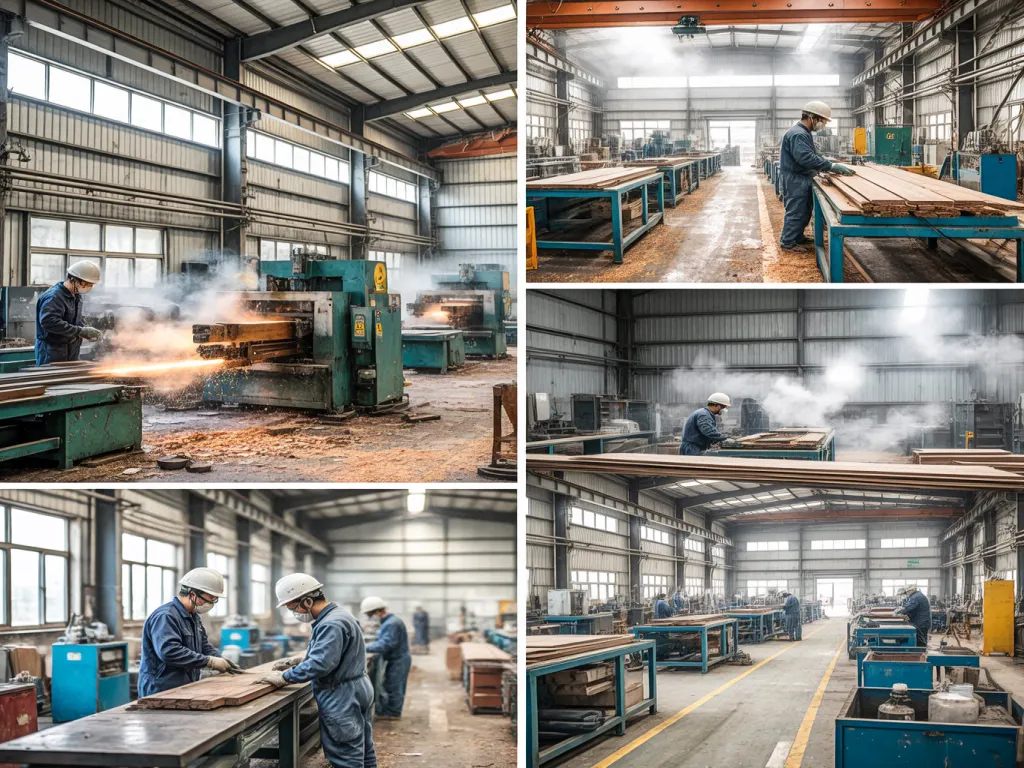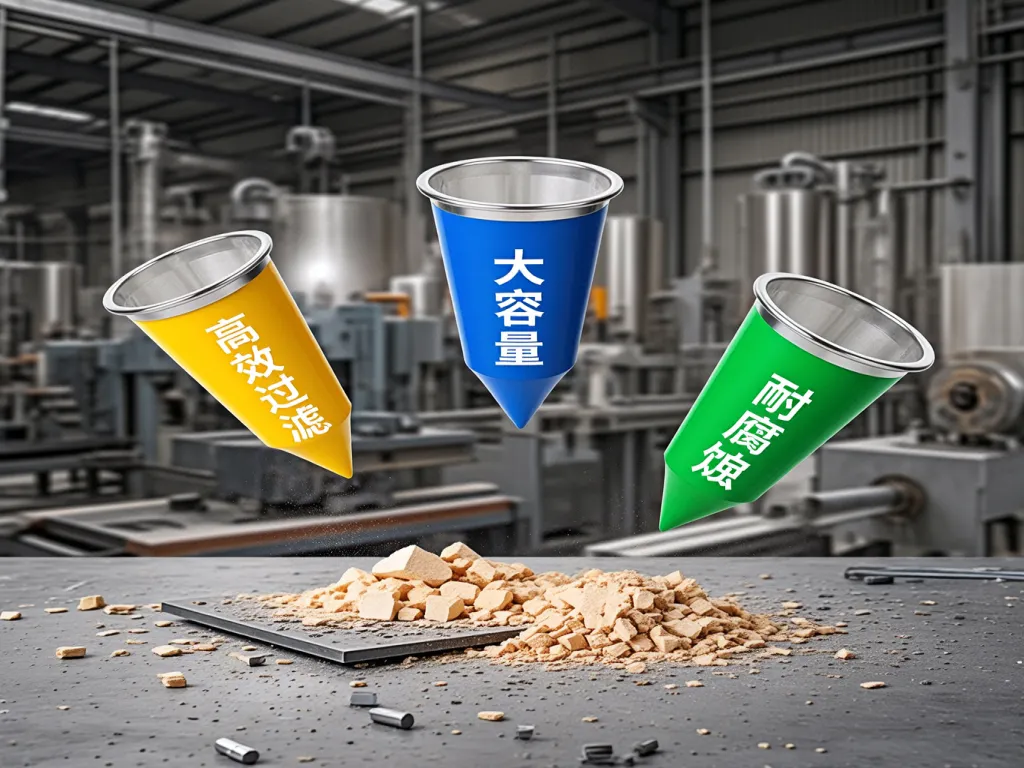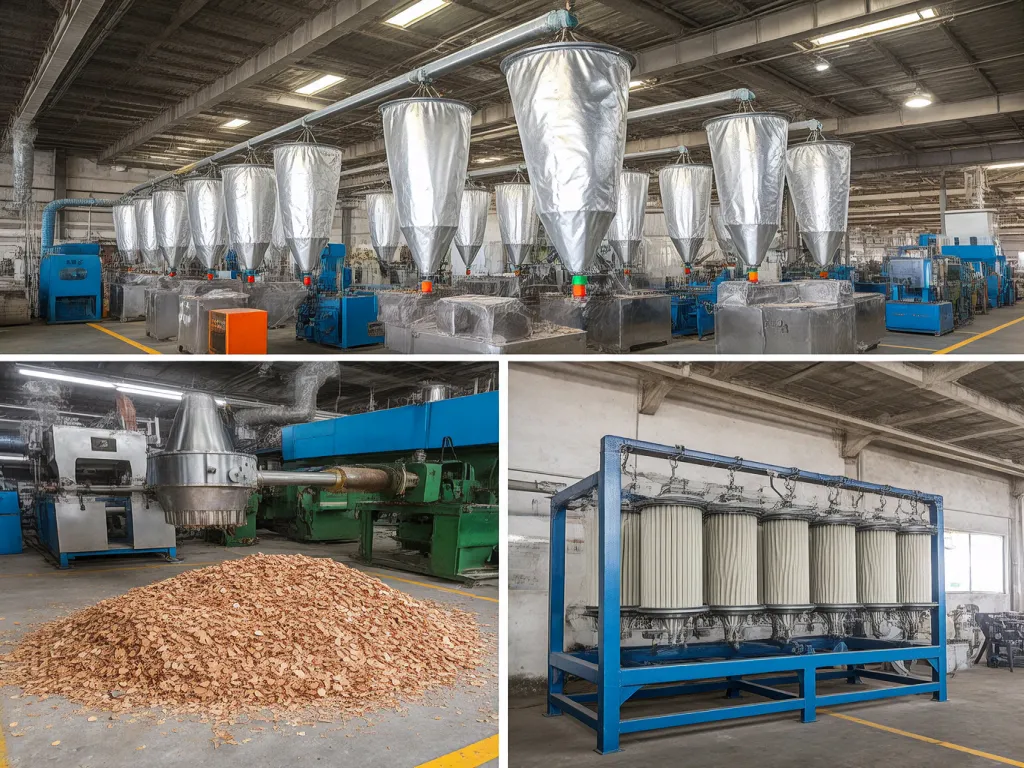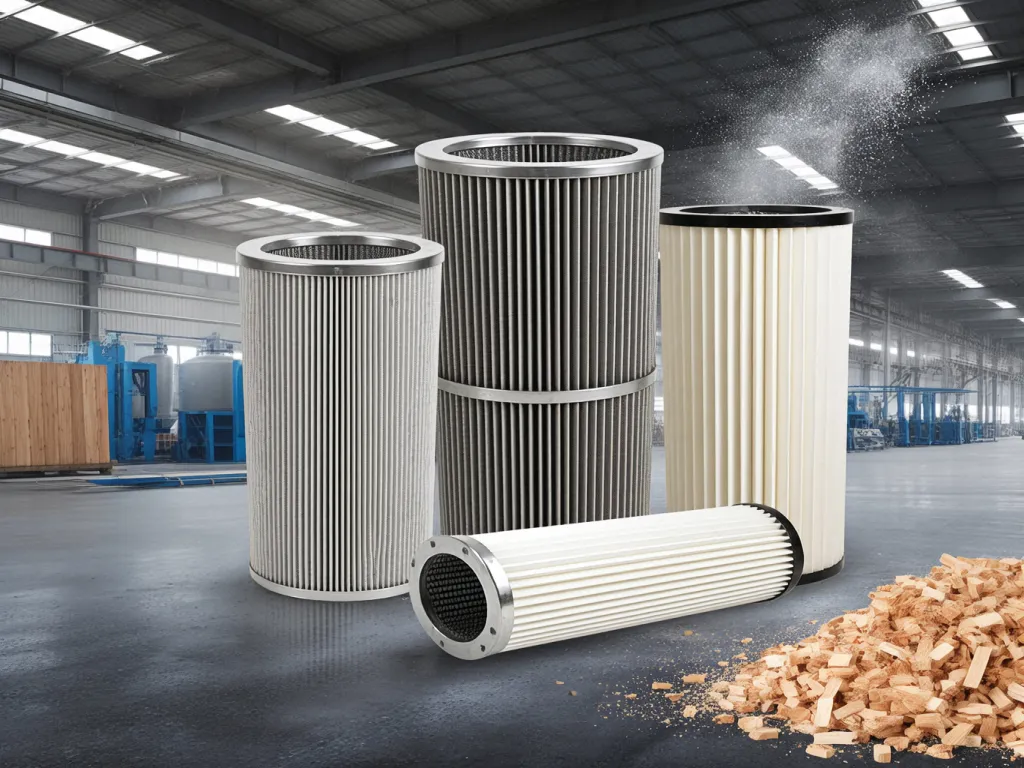Industrial Scene Guide: Pick the Right Shop Vac Filter Bag
Ever found yourself lost in the maze of shop vac filter bag options, wondering which one truly fits your industrial scene? Whether you’re tackling metal dust in a workshop, sawdust in a woodworking haven, or chemical particles in a production line, the right filter bag can make all the difference. Let’s dive into how to pick the ideal shop vac filter bag tailored to your specific needs, ensuring peak performance and a cleaner workspace.

Industrial Scene Analysis: Tailoring Your Shop Vac Filter Bag Choice
Metalworking: Tackling Tough Particulates
In metalworking shops, the air is often thick with a mix of fine metal shavings, larger chips, and sometimes even abrasive particles from grinding or cutting processes. These particulates are not just messy; they can be sharp and potentially harmful if inhaled. The concentration of dust can vary widely, from light dusting during precision machining to heavy accumulations in foundries or forging operations.
Given the abrasive nature of metal dust, you’ll need a shop vac filter bag that can withstand wear and tear. Look for bags made from durable materials like reinforced polyester, such as those found in our polyester pocket filter bags, or nylon, with a high filtration efficiency to capture even the smallest metal particles. As for vacuum power, a higher horsepower motor is often necessary to maintain suction strength against the dense dust clouds, ensuring efficient cleanup without clogging.
Woodworking: Navigating Fine Sawdust
Woodworking shops are a different beast altogether. Here, the primary concern is fine sawdust, which can range from light, fluffy particles to heavier, denser shavings depending on the type of wood and the cutting or sanding process used. Unlike metal dust, wood dust is generally less abrasive but can be more voluminous, creating a thick haze that quickly settles on surfaces and equipment.
For woodworking, a shop vac filter bag with a fine mesh is crucial to capture those tiny sawdust particles, preventing them from escaping back into the air. A medium to high filtration efficiency is ideal, balancing airflow with dust capture. When it comes to vacuum power, a mid-range motor is usually sufficient, as wood dust is less dense than metal dust. However, ensure your vacuum has enough power to handle the volume of dust produced during intensive woodworking tasks. If you’re looking for more options, consider exploring our range of polyester dust collector filter bags.
Chemical Production: Handling Hazardous Substances
Chemical production facilities face a unique set of challenges. The dust here may not just be dust in the traditional sense; it could be powders, granules, or even toxic fumes from chemical reactions. The concentration and toxicity of these substances vary greatly, depending on the chemicals being processed and the safety measures in place.
Safety is paramount in chemical production. Your shop vac filter bag must be chemically resistant, able to withstand exposure to potentially corrosive or reactive substances without degrading. Look for bags made from specialized materials like PTFE (Teflon), which you can find in our PTFE-coated polyester dust filter bags, or other chemically inert polymers. Filtration efficiency is also critical, as you may need to capture not just solid particles but also fine mists or vapors. A high-power vacuum with adjustable suction settings is recommended, allowing you to fine-tune the airflow based on the specific cleaning task and the level of hazard present.

Key Factors in Choosing Shop Vac Filter Bags: Efficiency, Capacity, and Durability
When it comes to selecting the right shop vac filter bag for your industrial scene, understanding the core factors—filter efficiency, dust holding capacity, and material durability—is crucial. These elements not only determine the performance of your vacuum but also influence its longevity and cost-effectiveness. Let’s dive deeper into each aspect and see how they can be matched to your specific industrial needs.
First up, filter efficiency. This refers to the bag’s ability to capture particles of varying sizes. In environments like metalworking shops, where fine metallic dust is prevalent, a high-efficiency filter bag is essential. It ensures that even the tiniest particles are trapped, preventing them from recirculating into the air and posing health risks. On the other hand, in woodworking shops, where larger wood shavings and sawdust are common, a slightly lower efficiency might suffice, provided the bag can handle the volume without clogging.
Next, consider the dust holding capacity. This is the volume of dust the bag can retain before needing replacement. In high-dust environments, such as chemical production facilities, a bag with a large capacity is vital. It reduces the frequency of bag changes, minimizing downtime and operational costs. Conversely, in cleaner settings, a smaller capacity bag might be more economical, as it won’t be overwhelmed as quickly.
Now, let’s talk about material durability. The bag’s material must withstand the rigors of your industrial environment. For instance, in corrosive chemical plants, a bag made from chemically resistant materials like polyester or nylon is preferable. These materials resist degradation, ensuring the bag remains intact and functional over time. For more insights into industrial filter bags and their efficiency, you can refer to this ultimate guide to high-efficiency filtration. In contrast, for general-purpose use in less harsh conditions, a standard cotton or paper blend might suffice, offering a balance between cost and performance.
But how do you match these parameters to your specific scene? It’s all about understanding your workspace’s unique demands. Ask yourself: What types of dust am I dealing with? How much dust is generated daily? What are the environmental conditions like—humid, dry, chemically aggressive? Answering these questions will guide you toward the right filter bag characteristics.
For example, if you’re running a metal fabrication shop with high volumes of fine metallic dust, you’ll want a high-efficiency, large-capacity bag made from durable, possibly anti-static material to prevent sparking. On the flip side, a woodworking shop might prioritize a balance between efficiency and capacity, with a focus on materials that resist tearing from sharp wood shavings.
Remember, the goal is to find a shop vac filter bag that not only meets your immediate needs but also offers long-term reliability and cost savings. By carefully considering filter efficiency, dust holding capacity, and material durability, you can make an informed decision that enhances your industrial cleaning process.

Filter Efficiency: The First Line of Defense
Filter efficiency is your first line of defense against airborne contaminants. In metalworking, where dust particles can be as small as a few microns, a HEPA (High-Efficiency Particulate Air) filter bag might be necessary. These bags can capture up to 99.97% of particles as small as 0.3 microns, ensuring a clean and safe working environment. For woodworking, a MERV (Minimum Efficiency Reporting Value) rated bag, which offers a good balance between efficiency and airflow, could be sufficient.
Dust Holding Capacity: Balancing Volume and Maintenance
Dust holding capacity is a balancing act between accommodating high volumes of dust and minimizing maintenance. In chemical plants, where dust can be both voluminous and hazardous, a bag with a high capacity and easy disposal mechanism is ideal. This reduces the risk of exposure during bag changes and keeps operations running smoothly. For less demanding environments, a moderate capacity bag with regular replacement intervals might be more practical.
Material Durability: Withstanding the Test of Time
Material durability ensures your filter bag can withstand the physical and chemical stresses of your industrial setting. In corrosive environments, materials like polyester or PTFE (Polytetrafluoroethylene) coated fabrics offer excellent resistance. Research indicates that the dust separation efficiency of filter bags can vary significantly based on the material used, as seen in studies like The Dust Separation Efficiency of Filter Bags Used in the Wood-Based Panels Furniture Factory. For general use, a blend of cotton and synthetic fibers provides a cost-effective solution with adequate durability. Always consider the environmental conditions and the type of dust when selecting the material.

Practical Cases & Solutions: Choosing the Right Shop Vac Filter Bag for Your Scene
When it comes to industrial cleaning, one size definitely doesn’t fit all. The right shop vac filter bag can make or break your cleaning efficiency, especially in specialized environments like metal fabrication, woodworking, or chemical production. Let’s dive into real-world examples where customized filter bag solutions transformed industrial cleaning. Imagine a mid-sized metal fabrication shop struggling with fine metallic dust that clogs ordinary filter bags within hours. Their existing vacuum system, rated at 150 CFM, was constantly losing suction as dust particles as small as 0.3 microns penetrated standard filters. The solution? A custom-engineered shop vac filter bag made from polyester needle-felt material with a micron rating of 0.5. This specialized bag featured: 1. A graded density structure that captured fine particles while maintaining airflow. 2. A PTFE membrane coating for superior dust release during cleaning cycles. 3. Reinforced seams to handle the abrasive nature of metal dust. The result? Filter replacement intervals extended from daily to weekly, with a 40% reduction in vacuum system maintenance costs. For deeper insights into filter performance optimization, you may refer to this technical study on filtration efficiency metrics. Now, let’s shift to a woodworking shop facing challenges with softwood dust containing sticky resin particles. Their conventional filter bags were suffering from premature clogging and frequent bag blowouts. After analyzing their specific needs, we recommended a hybrid filter bag combining: 1. A cellulose outer layer for initial particle capture. 2. A polypropylene inner layer for resin resistance. 3. A unique pleated design increasing filtration area by 60%. This solution delivered a 75% improvement in airflow retention and eliminated the need for daily bag changes during peak production periods. The chemical manufacturing sector presents entirely different challenges. A pharmaceutical plant processing fine powders needed a filter bag that could: 1. Contain potentially hazardous particles (OSHA-required containment level of 99.97% at 0.3 microns). 2. Withstand occasional chemical splashes. 3. Maintain structural integrity during pulse-jet cleaning. Our solution was a custom-designed antistatic filter bag featuring: 1. A Nomex/polyester blend for chemical resistance (learn more about Nomex filter applications). 2. A conductive coating to prevent static buildup. 3. Specialized sealing gaskets for airtight containment. This implementation reduced airborne particle levels by 92% and brought the facility into full compliance with EPA clean air standards. How do you determine which features matter most for your specific application? Let’s break down the decision-making process: 1. Particle Size Analysis: Use a particle counter to identify the predominant dust size range. 2. Dust Composition Testing: Chemical analysis reveals whether your dust contains oils, resins, or abrasive materials. 3. Vacuum System Audit: Measure actual CFM at the hose end to determine required filtration area. 4. Maintenance Frequency Assessment: Track how often you’re currently changing bags to establish benchmarks. For high-volume metal dust applications, prioritize: 1. Abrasion-resistant materials like polyester needle-felt. 2. Higher micron ratings (1-5 microns) to balance capture efficiency and airflow. 3. Multi-layer construction for progressive filtration. Woodworking environments benefit most from: 1. Hybrid materials combining cellulose and synthetic fibers. 2. Pleated designs to maximize filtration area. 3. Resin-resistant coatings. Chemical processing facilities require: 1. Chemical-resistant materials like PTFE or Nomex blends. 2. Antistatic properties. 3. Specialized sealing mechanisms. Remember, the most expensive filter bag isn’t always the best solution. A mid-range bag with carefully selected features for your specific dust type often outperforms premium options designed for general use. Have you considered how temperature extremes in your facility might affect filter bag performance? Or whether your vacuum system’s pulse-cleaning mechanism requires specific bag designs? These are exactly the kinds of questions our team helps clients answer every day. The key is matching your operational realities with filter bag capabilities – not the other way around.
Metal Fabrication Shop Transformation
In our metal fabrication case study, the shop’s primary challenge was managing fine metallic dust that would quickly clog standard filter bags. Their vacuum system, rated at 150 CFM, was losing suction as dust particles as small as 0.3 microns penetrated ordinary filters. The solution involved a custom-engineered shop vac filter bag made from polyester needle-felt material with a 0.5-micron rating. This specialized bag featured a graded density structure that captured fine particles while maintaining airflow, a PTFE membrane coating for superior dust release during cleaning cycles, and reinforced seams to handle the abrasive nature of metal dust. The result was a dramatic improvement: filter replacement intervals extended from daily to weekly, with a 40% reduction in vacuum system maintenance costs. For additional context on filtration material science, refer to MERV rating guidelines.
Woodworking Shop Efficiency Boost
The woodworking shop faced challenges with softwood dust containing sticky resin particles. Their conventional filter bags were suffering from premature clogging and frequent bag blowouts. After analyzing their specific needs, we recommended a hybrid filter bag combining a cellulose outer layer for initial particle capture, a polypropylene inner layer for resin resistance, and a unique pleated design increasing filtration area by 60%. This solution delivered a 75% improvement in airflow retention and eliminated the need for daily bag changes during peak production periods, significantly enhancing operational efficiency. For similar hybrid filter solutions, explore our polyester pocket filter bags.
Chemical Manufacturing Compliance Solution
A pharmaceutical plant processing fine powders needed a filter bag that could contain potentially hazardous particles (OSHA-required containment level of 99.97% at 0.3 microns), withstand occasional chemical splashes, and maintain structural integrity during pulse-jet cleaning. Our solution was a custom-designed antistatic filter bag featuring a Nomex/polyester blend for chemical resistance, a conductive coating to prevent static buildup, and specialized sealing gaskets for airtight containment. This implementation reduced airborne particle levels by 92% and brought the facility into full compliance with EPA clean air standards, demonstrating the importance of tailored solutions in highly regulated environments. For antistatic filter technologies, see our PTFE-coated filter bags.
Selecting the right shop vac filter bag isn’t just about buying a product; it’s about investing in the efficiency and cleanliness of your industrial environment. By considering the unique demands of your scene—be it metalworking, woodworking, or chemical production—you can match a filter bag that excels in performance and durability. Remember, a customized approach to filter bag selection can transform your cleaning routine. Ready to upgrade your workspace? Explore our solutions and take the first step towards a spotless industrial setting today!

